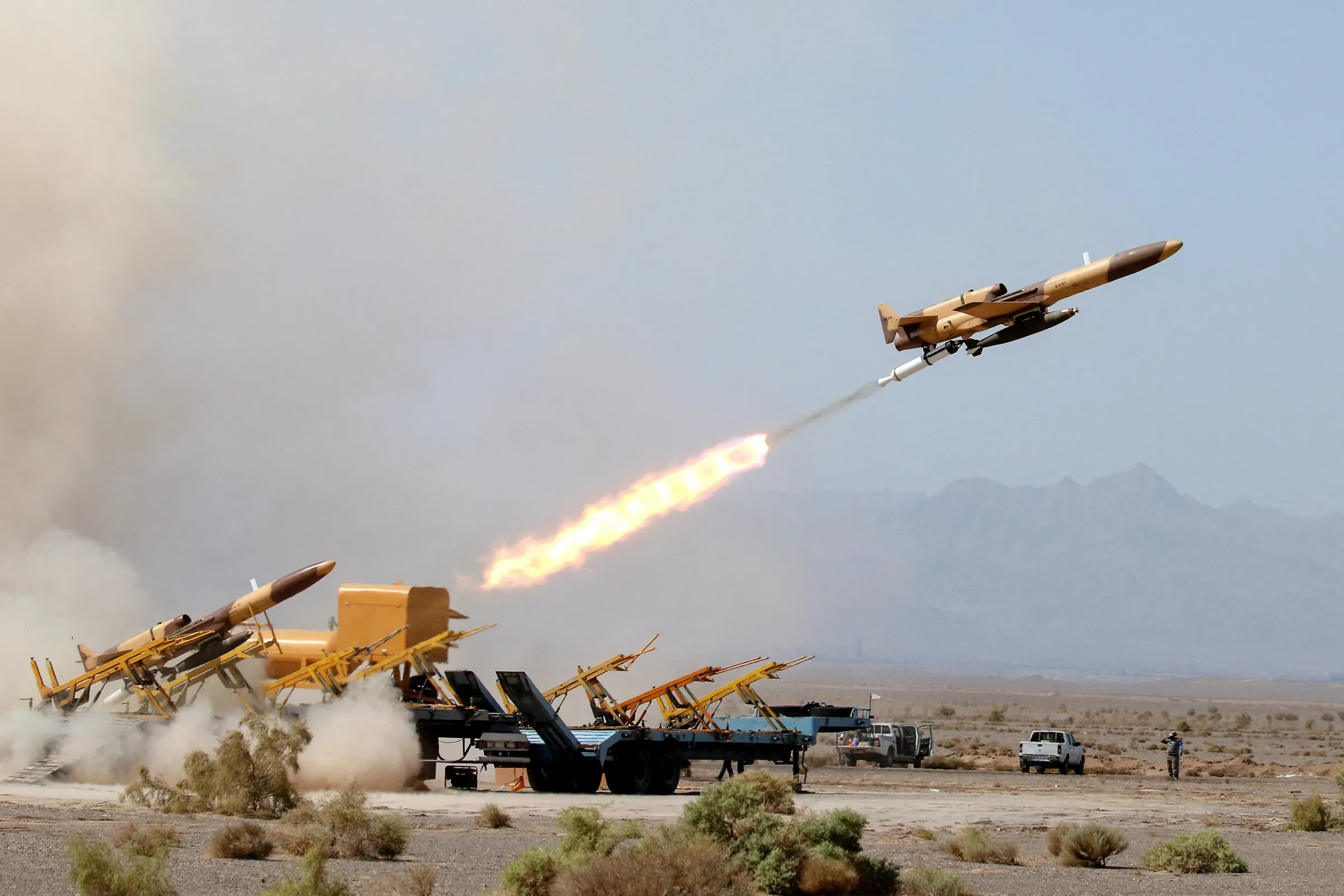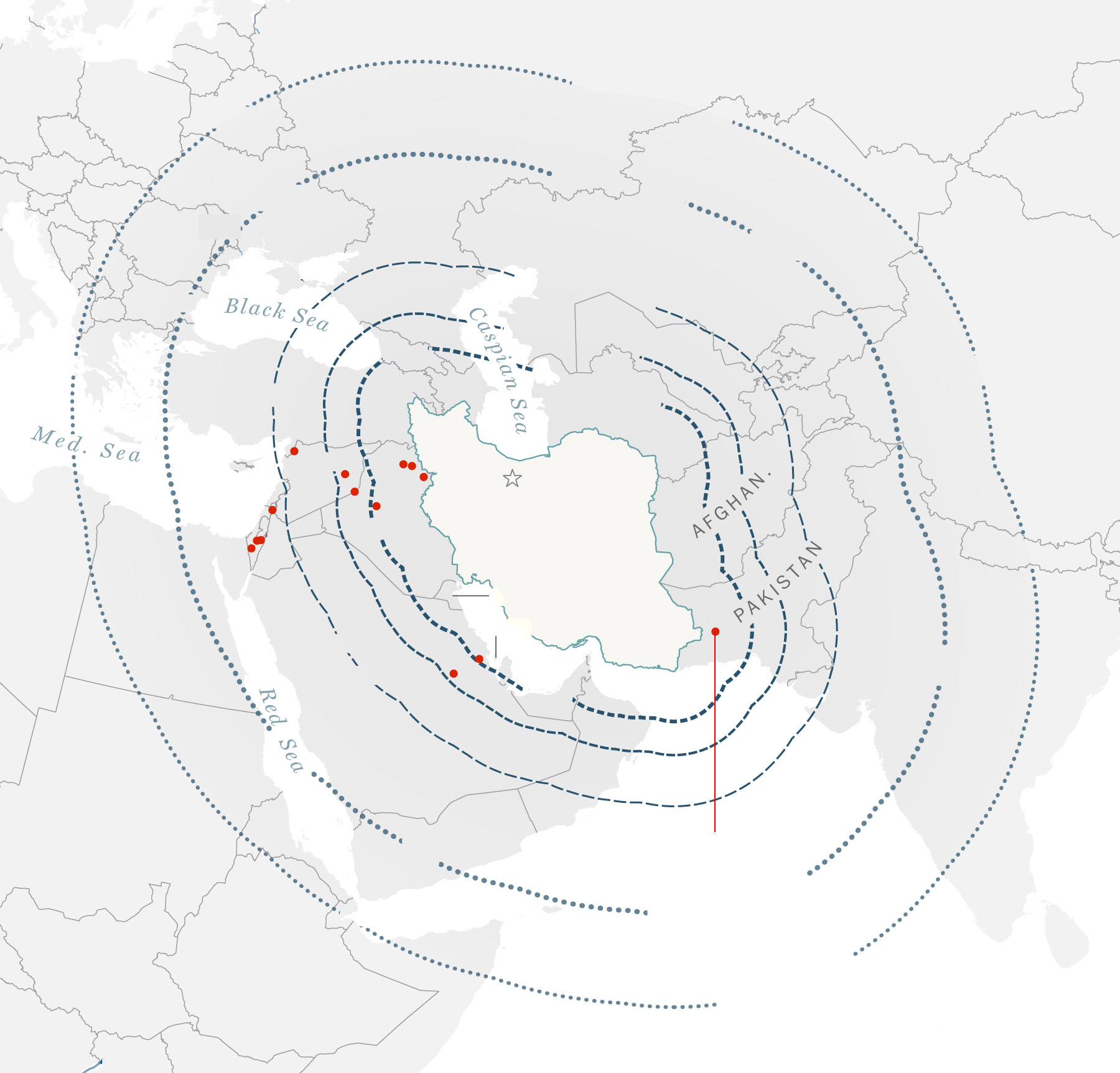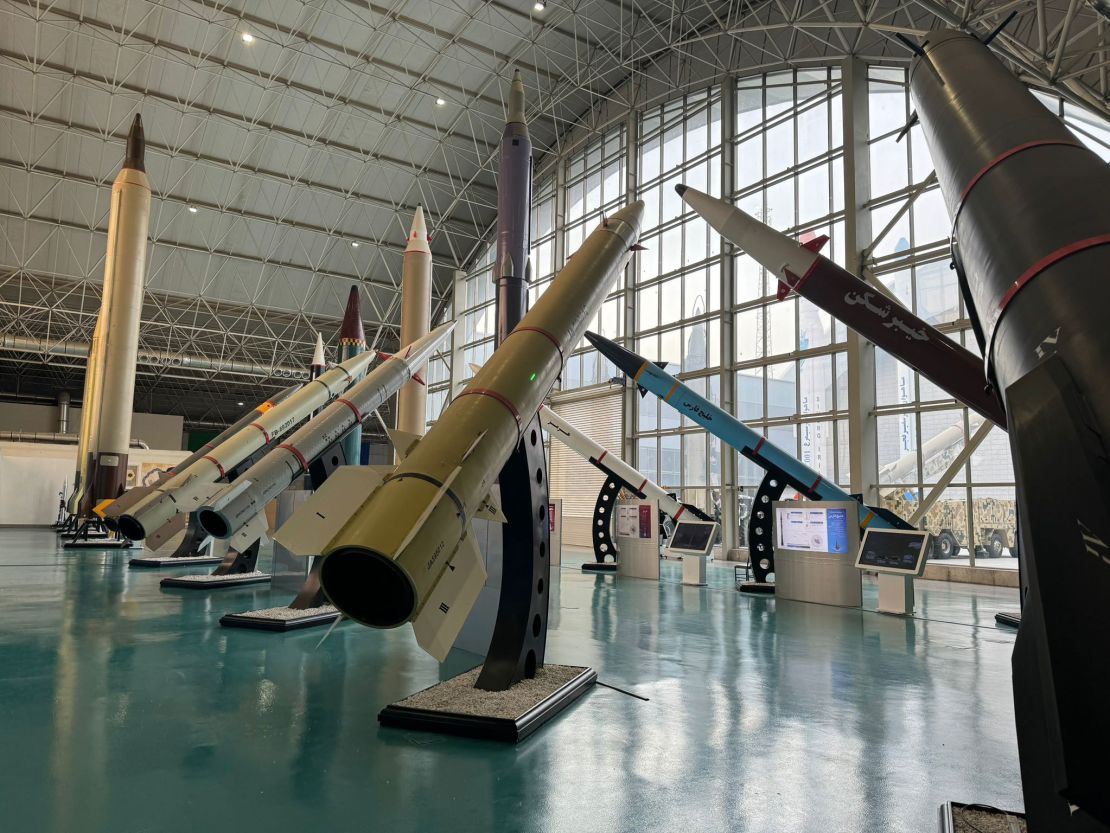Iran's Ballistic Missile Holdings - A Closer Look
Table of Contents
- Introduction
- How many ballistic missiles does Iran have?
- What sort of ballistic missiles does Iran have?
- How has Iran improved its ballistic missile capabilities?
- Where are Iran's ballistic missile sites located?
- How quickly can Iran's ballistic missiles reach targets?
- What is the purpose of Iran's ballistic missile arsenal?
- Has Iran used its ballistic missiles recently?
- How do others view Iran's ballistic missile program?
Introduction
When you think about the Middle East and its various security considerations, one topic that often comes up is the strength of different nations' military capabilities, and as a matter of fact, Iran's missile forces are a really significant part of that conversation. It appears Iran possesses a substantial number of these rocket-propelled weapons, with figures suggesting there are well over three thousand of them, making it quite a collection in that part of the world. This sizable inventory, you know, gives them a unique position in the region's power dynamics.
This particular collection of weapons isn't just large in terms of raw numbers; it's also, in some respects, quite varied. We're talking about a mix of different types of missiles, some of which are thought to have the ability to reach places as far away as Israel and even parts of Southeast Europe. So, it's not just about having a lot of them, but also about the potential reach these systems might have, which is, honestly, a point of discussion for many observers.
For quite some time now, over the last ten years or so, Iran has been putting a lot of effort into making these weapons more effective, improving how precisely they can hit a spot and how much impact they can deliver. This ongoing work, you know, has helped to shape Iran's missile forces into something that many consider to be a rather formidable presence, something to certainly be aware of in the wider security picture.
How many ballistic missiles does Iran have?
It's a question that, frankly, comes up quite a bit when people are looking at the military landscape in the Middle East: just how many ballistic missiles does Iran actually possess? Well, based on what we know, Iran has a really significant collection, with numbers suggesting they have more than 3,000 of these weapons. That figure, you know, places their missile holdings as the biggest in the Middle East, which is quite a notable distinction.
To give you a bit more perspective on that, the commander of US Central Command, General Kenneth McKenzie, actually put the number of Iran's ballistic missiles somewhere between 2,022 and 3,000. So, it's not just a general idea; there are indeed specific estimates from military leaders. This suggests, in a way, that Iran's focus on building up this particular type of weapon has been rather consistent and extensive over time, making their overall arsenal quite substantial.
This large number of missiles means Iran has what's often described as the biggest and most diverse collection of these kinds of weapons in the Middle East. It's not just a single type of missile; it's a whole array, including thousands of both ballistic and cruise missiles. This variety, you see, adds another layer to their overall military posture, allowing them, perhaps, different ways to approach various situations, which is, honestly, something to consider.
What sort of ballistic missiles does Iran have?
When we talk about the kinds of ballistic missiles Iran has, it's not just one standard model; there's actually a range of them. They possess, as we've heard, thousands of both ballistic and cruise missiles, and some of these, it's thought, are capable of reaching targets as far away as Israel and even parts of Southeast Europe. This reach, you know, gives them a broad potential scope for their operations, which is quite a thing to think about.
Among their more recent additions, there's a group of missiles known as the Khaibar Shekan family. These are, in a way, a newer generation of their missile technology, and they happen to be powered by solid propellant, which can offer certain advantages in terms of readiness and deployment. Within this family, for example, you find the Khaibar Shekan 1 and 2, which are part of their evolving collection of these powerful rockets.
Then there's the Fattah 1, which has been described by Iranian sources as the country's very first hypersonic missile. Now, it's important to mention that claims like this, about its hypersonic capabilities, remain unverified by independent sources, so that's something to keep in mind. Even so, the missiles in this group, like the Khaibar Shekan family, are said to have a reach of about 1,250 miles. Experts, however, believe that Iran could, with some adjustments, quickly make and use ballistic missiles that can travel significantly farther, which, you know, suggests an ongoing potential for development.
How has Iran improved its ballistic missile capabilities?
For roughly the last ten years, Iran has been putting a lot of resources into making these weapons better. They've really invested, as a matter of fact, in improving their precision – that is, how accurately they can hit a specific point – and also their lethality, which means how much damage they can cause. This dedication to refining their missile technology has been a consistent effort, showing a clear intent to enhance their capabilities.
These kinds of advancements, you see, have really contributed to Iran's missile forces becoming what many would describe as a rather potent element in the region. It's not just about having the missiles; it's about making sure they are as effective as possible when, for instance, they might be needed. This ongoing development means their missile program is, in a way, always being refined and updated, which is something many observers pay close attention to.
The continuous work on these systems, including the development of newer generations like the Khaibar Shekan family, suggests a strategic approach to maintaining and strengthening their missile capabilities. They are, in essence, trying to ensure their missile forces remain a significant factor in any regional considerations. This focus on improvement, honestly, tells a story about their long-term military objectives.
Where are Iran's ballistic missile sites located?
When you consider the physical presence of Iran's missile program, it's worth noting that they have, as a matter of fact, at least 24 identified missile sites. These locations are found across the western half of the country, and they are spread out quite a bit, from the northern parts all the way down to the south. This geographical distribution, you know, suggests a broad and well-established infrastructure for their missile operations.
It's also interesting to observe that some of these sites appear to operate on their own, perhaps as standalone facilities, while others are, in a way, grouped together in what look like clusters. This variety in how the sites are arranged could point to different operational purposes or levels of security. So, it's not just a uniform setup; there's a mix of configurations across their network of missile locations.
The existence of so many identified sites, spread out geographically, points to a considerable investment in infrastructure to support their ballistic missile capabilities. It suggests, basically, that the housing and potential launching of these weapons are integrated into a wider network. This dispersed nature of the sites might also play a role in their overall strategy, making them, perhaps, more resilient to certain kinds of actions, which is, honestly, a consideration for those watching the region.
How quickly can Iran's ballistic missiles reach targets?
A key aspect of understanding Iran's missile capabilities is, in fact, how fast these weapons can get to their intended destinations. When we talk about their ballistic missiles, for example, it's understood that they could reach Israel within a timeframe of about 12 minutes. That's a really short amount of time, which highlights the speed at which these particular weapons operate once launched.
For other types of their weapons, like cruise missiles, the travel time is considerably longer, perhaps around two hours. And for drones, it could take even more time. But focusing on the ballistic missiles, that 12-minute figure really underscores their quick strike potential. This speed, you know, is a defining characteristic of ballistic missile systems, allowing for a rapid response or impact, which is, honestly, a factor in strategic planning.
The difference in travel times between various weapon types, particularly the swiftness of the ballistic missiles, is a significant detail. It means that any response or defensive measures would need to be incredibly fast. So, when people discuss the capabilities of Iran's ballistic missiles, their rapid delivery to potential targets is, in a way, a central part of that conversation, emphasizing the immediate nature of their threat.
What is the purpose of Iran's ballistic missile arsenal?
Iran itself states that its ballistic missiles serve as an important way to deter potential aggressors and as a force for retaliation against certain targets. They view these weapons, basically, as a critical part of their national security, meant to discourage actions from countries like the United States, Israel, and other potential regional adversaries. It's, in a way, their stated means of defense and a way to strike back if they feel it's necessary.
It's also worth noting that Iran consistently denies any intentions of seeking nuclear weapons. They maintain that their missile program is purely for conventional defense and retaliation purposes. This distinction, you know, is a point they frequently make, emphasizing that their missile capabilities are not linked to a nuclear ambition, which is, honestly, a key part of their official stance.
So, the purpose, as Iran sees it, is primarily about having a strong hand in regional security dynamics. These missiles are considered their most effective option for striking back, particularly if their missile sites were to come under attack, as has happened in the past. This perspective suggests that the ballistic missile capability is seen as a central pillar of their ability to respond to perceived threats, which is, in some respects, a very direct way of looking at it.
Has Iran used its ballistic missiles recently?
Yes, there was a notable instance when Iran, as a matter of fact, launched a volley of ballistic missiles towards Israel. This event took place on a Tuesday and was described as an act of retaliation. The reason given for this action was Israel's ongoing campaign against Tehran's allies, specifically Hezbollah, located in Lebanon. This particular firing of missiles drew on a range of weapons that Iran has, which, you know, have been part of their arsenal for quite some time.
The act of firing these missiles, in a way, demonstrated Iran's willingness to use these capabilities in response to specific events in the region. It showed, basically, that their missile forces are not just for show but are considered an active tool in their foreign policy and defense strategy. This kind of action, honestly, brings the discussion about their missile holdings from a theoretical one to a very real and observable event.
Such an event also brings into focus the array of weapons Iran has at its disposal, and how they choose to employ them. The decision to use ballistic missiles in this context highlights their role as a potential means of direct engagement in regional conflicts. It's, in some respects, a clear signal about the operational readiness and perceived utility of their missile program, which is, frankly, something that draws a lot of attention.
How do others view Iran's ballistic missile program?
The perspective on Iran's ballistic missile program from other nations, particularly Israel, is quite distinct. Israel, for example, has actually launched attacks against Iran's ballistic missile program itself. This suggests, you know, that they view it as a significant concern, something that needs to be addressed directly. Experts, too, generally consider Iran's missile program to be the biggest in the Middle East, which underscores its importance in the broader regional security picture.
There's also the idea that, depending on how effective any strikes on Iran's missile sites might be, their ballistic capability could still remain their most potent way of striking back. This suggests, in a way, that even if some damage is done, the core ability to retaliate might persist, making it a very resilient part of their military. So, it's not just about the size of the arsenal, but also its perceived durability and effectiveness as a counter-measure.
The fact that a US military leader, General Kenneth McKenzie, specifically mentioned Iran having more than 2,022 to 3,000 ballistic missiles, also shows how seriously this program is viewed by major international players. This level of detail from such a source, you know, emphasizes the ongoing assessment and monitoring of Iran's missile capabilities. It's clear that this particular aspect of Iran's military is, honestly, a central point of focus for many around the world.
- Jasmine Pilchard Gosnell
- Los Farmerz Members
- Brad Marchand Wife
- Relatos Eroticos Suegro
- Melissa Onlyfans

Russia seeking hundreds of ballistic missiles from Iran in 'full

What Iran’s attack on Israel revealed about its weapons arsenal - The

Israel-Iran news: CNN gets a rare look at the Iranian missiles and